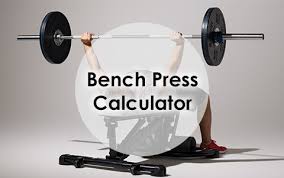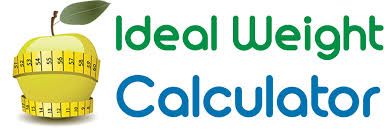Are you curious about your maximum strength for the bench press exercise? Look no further than a bench press one rep max calculator, also known as a bench press 1 rep max calculator. This online tool estimates your one-rep max based on your lifting history, allowing you to set goals, track progress, and design an effective workout plan. With the help of a bench press calculator, you can improve your strength and achieve your fitness goals.
Bench Press Max Calculator
| Repetition | % 1RM | Weight |
|---|
[ez-toc]
When it comes to strength training and building an impressive upper body, the bench press is a classic exercise that takes center stage. It’s not just about lifting weights; it’s about pushing your limits and discovering your Bench Press One Rep Max (1RM). In this article, we’ll delve into the world of the bench press, what the 1RM represents, and how you can safely and effectively increase it.
What is Bench Press One Rep Max (1RM)?
Your Bench Press One Rep Max (1RM) is the maximum amount of weight you can lift for a single repetition of the bench press exercise. It’s a key metric for assessing upper body strength, and understanding it can help you set training goals, track progress, and tailor your workouts accordingly.
Why is knowing your maximum lift useful for bench press?
The bench press is a fundamental weightlifting exercise that targets the chest, shoulders, and triceps muscles. It is a compound exercise that requires strength and proper form to perform correctly. One essential measure of strength for the bench press is knowing your maximum lift or one-rep max. In this article, we will explore why knowing your maximum lift is useful for the bench press.
Helps track progress Knowing your maximum lift for the bench press can help you track your progress over time. By regularly testing your one-rep max and comparing it to previous results, you can determine if you are improving your strength and making progress towards your fitness goals.
Allows for proper weight selection Knowing your maximum lift can help you determine the appropriate weight to use for your bench press workouts. By selecting a weight that is challenging but still allows you to perform the exercise with proper form, you can prevent injury and ensure that you are targeting the correct muscle groups.
Helps set realistic goals Knowing your maximum lift can help you set realistic goals for your bench press workouts. By setting specific goals based on your one-rep max, you can create a workout plan that is tailored to your strength level and helps you achieve your fitness goals.
Prevents overtraining Knowing your maximum lift can also help prevent overtraining. If you consistently lift weights that are too heavy for your current strength level, you can increase your risk of injury and hinder your progress. By selecting a weight that is appropriate for your current strength level, you can avoid overtraining and maximize your results.
Increases motivation Knowing your maximum lift can also increase your motivation to improve your strength and achieve your fitness goals. By setting specific goals based on your one-rep max, you can challenge yourself and work towards achieving new personal records.
How to Calculate Your Bench Press 1RM
There are a few methods to estimate your Bench Press 1RM, but one commonly used formula is the Epley formula. Here’s how it works:
1RM = W x (1 + 0.0333 x R)
Where:
- 1RM is your estimated one-rep max.
- W is the weight you lifted for a given number of repetitions.
- R is the number of repetitions you completed with that weight.
Here’s a step-by-step guide on how to use the Epley formula:
Select a Weight: Choose a weight that you can lift for a specific number of repetitions. For example, if you can bench press 150 pounds for 5 repetitions, your W would be 150, and your R would be 5.
Apply the Formula: Plug your values into the formula. In this example, your calculation would look like this:
1RM = 150 x (1 + 0.0333 x 5)
Calculate: Perform the calculations to find your estimated Bench Press 1RM. In this case:
1RM = 150 x (1 + 0.1665)
1RM ≈ 174.98 pounds
Based on the Epley formula, your estimated Bench Press 1RM is approximately 175 pounds.
Tips for Calculating Bench Press 1RM:
Ensure that the weight you select and the number of repetitions you perform are done with proper form and control to get an accurate estimate.
When testing your 1RM, always prioritize safety. Have a spotter when necessary, and be prepared to abandon the lift safely if you are unable to complete it.
Keep in mind that the Epley formula provides an estimate, and actual 1RM values can vary based on factors such as fatigue, technique, and individual differences in strength.
What are bench press Exercises ?
Bench press exercises are a popular strength training workout that has been around for decades. This exercise is known for its ability to build upper body strength, particularly in the chest, shoulders, and triceps. Whether you’re a beginner or an experienced weightlifter, the bench press is a fundamental exercise that you should include in your workout routine.
We’ll delve deeper into the bench press exercise, its benefits, different variations, and how to perform it correctly.
What is the bench press?
The bench press is a weightlifting exercise that involves lying on a bench while lifting a barbell from a rack and lowering it to the chest, then pushing it back up. It primarily targets the chest muscles but also works the triceps and shoulders.
What are bench press Exercise Benefits ?
Bench press exercise is a popular weightlifting exercise that has been around for decades. It is a compound exercise that primarily targets the chest muscles, but also works the triceps and shoulders. Whether you are a beginner or an experienced weightlifter, the bench press is an essential exercise that you should include in your workout routine. In this article, we will explore the benefits of the bench press exercise.
Builds upper body strength The bench press is a compound exercise that works multiple muscle groups, making it an effective way to build overall upper body strength. It targets the chest muscles, shoulders, and triceps, which are essential for many daily activities, such as pushing, lifting, and carrying.
Increases muscle size The bench press exercise can also help increase muscle size, particularly in the chest muscles. By using heavy weights and performing a high number of repetitions, you can induce muscle hypertrophy, which is the process of increasing muscle size.
Improves bone density The bench press is a weight-bearing exercise that can help improve bone density, reducing the risk of osteoporosis. When you lift weights, your bones experience small amounts of stress, which encourages them to become stronger and denser.
Enhances overall fitness The bench press is an intense exercise that can help improve your overall fitness. By regularly performing the bench press, you can improve your muscular endurance, cardiovascular health, and overall physical conditioning.
Boosts confidence The bench press exercise is a challenging exercise that requires strength, focus, and determination. By successfully completing a challenging workout, you can boost your confidence and feel a sense of accomplishment.
Improves posture A strong upper body can help improve your posture by reducing the strain on your back muscles. By strengthening your chest, shoulders, and triceps, you can improve your posture and reduce the risk of back pain and injury.
The bench press exercise offers a range of benefits, including increased upper body strength, muscle size, bone density, overall fitness, confidence, and improved posture. By incorporating the bench press exercise into your workout routine, you can achieve your fitness goals and enjoy a healthier, more active lifestyle. As with any exercise, it is essential to perform the bench press exercise correctly and with proper form to avoid injury.
Different variations of the bench press
The bench press can be performed in different variations, each targeting different muscle groups. Some of the variations include:
Incline bench press: This variation targets the upper chest muscles and shoulders.
Decline bench press: This variation targets the lower chest muscles and triceps.
Close grip bench press: This variation targets the triceps more than the chest.
How to perform the bench press
To perform the bench press correctly, follow these steps:
Lie on a bench with your feet flat on the ground, and your back and head firmly on the bench.
Grab the bar with a grip that is slightly wider than shoulder-width apart.
Lower the bar to your chest while keeping your elbows tucked in.
Push the bar back up to the starting position while exhaling.
Repeat for the desired number of repetitions.
The bench press is a fundamental exercise that should be included in any upper body strength training routine. It targets several muscle groups and offers a range of benefits, including increased strength and improved posture. By following the correct form and incorporating different variations, you can get the most out of your bench press workouts.
In conclusion, knowing your maximum lift for the bench press is essential for tracking progress, proper weight selection, setting realistic goals, preventing overtraining, and increasing motivation. By regularly testing your one-rep max and using it to guide your workouts, you can improve your strength, prevent injury, and achieve your fitness goals.

What percentage of my 1 rep max should I lift for bench press ?
The bench press is a popular weightlifting exercise that targets the chest, shoulders, and triceps muscles. One common question among weightlifters is, “What percentage of my one-rep max should I lift for the bench press?” In this article, we will explore the answer to this question and provide guidance on how to determine the appropriate weight to use for your bench press workouts.
What percentage of your one-rep max should you lift for bench press?
The percentage of your one-rep max that you should lift for bench press depends on your training goals and fitness level. The following are general guidelines for weightlifters:
For strength training: If your goal is to increase your strength, you should aim to lift weights that are 85-100% of your one-rep max for 1-5 repetitions.
For hypertrophy training: If your goal is to increase muscle size, you should aim to lift weights that are 67-85% of your one-rep max for 6-12 repetitions.
For endurance training: If your goal is to increase muscular endurance, you should aim to lift weights that are 50-67% of your one-rep max for 15 or more repetitions.
Determining the appropriate weight for your bench press workouts
To determine the appropriate weight to use for your bench press workouts, you first need to know your one-rep max. You can calculate your one-rep max using various methods, such as the Epley formula or by performing a one-rep max test with a spotter.
Once you know your one-rep max, you can use the guidelines above to determine the appropriate weight to use for your training goals. For example, if your one-rep max is 200 pounds, and you want to focus on strength training, you should aim to lift 170-200 pounds for 1-5 repetitions.
It is important to use proper form and technique when performing the bench press exercise, regardless of the weight used. This will help prevent injury and ensure that you are targeting the correct muscle groups.
The percentage of your one-rep max that you should lift for bench press depends on your training goals and fitness level. To determine the appropriate weight to use for your bench press workouts, you need to know your one-rep max and use the guidelines above to select a weight that is appropriate for your training goals. Remember to use proper form and technique when performing the exercise to prevent injury and maximize your results.
How to increase Bench Press One Rep Max
Increasing your Bench Press One Rep Max (1RM) requires dedication, a structured training plan, proper form, and attention to several key factors. Here’s a comprehensive guide on how to increase your Bench Press 1RM:
1. Start with Proper Form:
- Before focusing on heavier weights, ensure your bench press form is correct. Proper form not only reduces the risk of injury but also optimizes muscle engagement.
- Maintain a stable back, with your shoulder blades retracted and firmly pressed against the bench.
- Grip the barbell with your hands slightly wider than shoulder-width apart.
- Lower the barbell to your chest under control, and press it back up in a straight line.
2. Warm-Up Thoroughly:
- Begin each bench press workout with a comprehensive warm-up. Include light cardio, dynamic stretches, and mobility exercises to prepare your muscles and joints.
3. Progressive Overload:
- The principle of progressive overload is the foundation of strength training. Gradually increase the weight you lift over time to challenge your muscles.
- Aim to lift heavier weights for a certain number of repetitions in each training session.
4. Vary Your Repetition Ranges:
- Incorporate a mix of low-rep (1-5 repetitions), moderate-rep (6-10 repetitions), and high-rep (10-15 repetitions) sets into your training program.
- Low-rep sets build strength, while higher-rep sets enhance endurance and hypertrophy.
5. Bench Press Variations:
- Include bench press variations in your routine to target different muscle groups and break plateaus.
- Variations like incline bench press, decline bench press, and dumbbell bench press can add variety to your training.
6. Periodization:
- Use a well-structured training program that employs periodization. Periodization involves organizing your training into phases, each with specific intensity and volume levels.
- This approach prevents overtraining, promotes recovery, and optimizes strength gains.
7. Assistance Exercises:
- Include assistance exercises that target muscles used in the bench press, such as tricep dips, push-ups, and overhead presses.
- These exercises can strengthen muscle groups that may be limiting your bench press performance.
8. Nutrition and Recovery:
- Consume a balanced diet with adequate protein to support muscle growth and recovery.
- Prioritize sleep and rest days to allow your muscles to repair and grow stronger.
9. Consistency:
- Consistency is key to increasing your Bench Press 1RM. Stick to your training program and avoid prolonged breaks from strength training.
10. Proper Spotting:
- When attempting heavy lifts, always have a spotter present for safety. They can provide assistance if needed and ensure your well-being during the lift.
11. Track Your Progress:
- Keep a detailed training log to monitor your bench press progress. Record the weights, sets, and repetitions you complete in each workout.
12. Be Patient:
- Increasing your Bench Press 1RM is a gradual process. Understand that progress may not always be linear, and plateaus are common.
What is a bench press one-rep max calculator?
A bench press calculator is an online tool that can estimate your one-rep max based on the weight lifted and the number of repetitions performed. The calculator uses a formula, such as the Epley formula, to estimate your one-rep max based on your lifting history.
How to use a bench press one-rep max calculator?
Using a bench press one-rep max calculator is a simple and easy process. Follow these steps to use the calculator:
Choose a calculator: There are several bench press one-rep max calculators available online. Choose a calculator that is reputable and user-friendly.
Input your lifting history: Input the weight you lifted and the number of repetitions performed for a specific exercise, such as the bench press.
Calculate your one-rep max: Click on the calculate button to estimate your one-rep max based on your lifting history.
Use the results: Use the results to set goals and track your progress over time.
Tips for accurate results
To get accurate results from a bench press one-rep max calculator, follow these tips:
Use proper form and technique when performing the exercise.
Use a weight that is challenging but still allows you to complete the designated number of repetitions with proper form.
Record your lifting history accurately, including the weight lifted and the number of repetitions performed.
Use multiple calculators to compare results and ensure accuracy.
FAQ on Bench Press One Rep Max
What is Bench Press One Rep Max (1RM)?
Bench Press One Rep Max (1RM) is the maximum amount of weight a person can lift for a single repetition of the bench press exercise. It measures upper body strength.
How is knowing my Bench Press 1RM beneficial?
Understanding your Bench Press 1RM helps you set strength goals, design personalized training programs, and track your progress effectively.
What is the Epley formula for calculating Bench Press 1RM?
The Epley formula is a widely used method to estimate Bench Press 1RM. It’s calculated as 1RM = W x (1 + 0.0333 x R), where W is the weight lifted, and R is the number of repetitions.
How do I use a Bench Press Max Calculator?
To use a Bench Press Calculator, enter the weight you lifted and the number of repetitions into the calculator. It will provide you with an estimated Bench Press 1RM.
Are Bench Press Max Calculator accurate?
Bench Press Max Calculators provide reasonably accurate estimates of your 1RM based on the input data. However, actual 1RM values can vary due to factors like fatigue and technique.
Can I calculate Bench Press 1RM without a calculator?
Yes, you can calculate Bench Press 1RM manually using the Epley formula mentioned earlier. All you need is a weight lifted and the number of repetitions.
How often should I test my Bench Press 1RM?
Testing Bench Press 1RM is physically demanding and not required frequently. Many lifters test it every 6-12 weeks to monitor progress and set new goals.
What is the significance of Bench Press Max in powerlifting?
In powerlifting competitions, Bench Press Max is one of the three lifts (alongside squat and deadlift) used to determine an athlete’s total score. It’s a crucial component of powerlifting.
Can I increase my Bench Press 1RM with proper training?
Yes, with a well-structured training program, progressive overload, and consistency, you can increase your Bench Press 1RM over time.
Should I have a spotter when testing Bench Press 1RM?
Yes, it’s advisable to have a spotter present when attempting your 1RM. A spotter can assist if needed and ensure your safety during the lift.
Are there different formulas to calculate Bench Press 1RM?
Yes, apart from the Epley formula, there are other formulas like the Lombardi and Brzycki methods that provide slightly different estimates. Different formulas may work better for different individuals.
Can Bench Press Calculator be used for other exercises?
While Bench Press Calculator are specific to the bench press, similar calculators exist for other exercises like squat and deadlift to estimate their respective 1RMs.
A bench press one-rep max calculator is a useful tool in estimating your one-rep max for the bench press exercise. By using a calculator, you can set goals, track progress, and design an effective workout plan that targets specific muscle groups. Remember to use proper form and technique when performing the exercise and to input your lifting history accurately for the most accurate results. With the help of a bench press one-rep max calculator, you can improve your strength and achieve your fitness goals.





